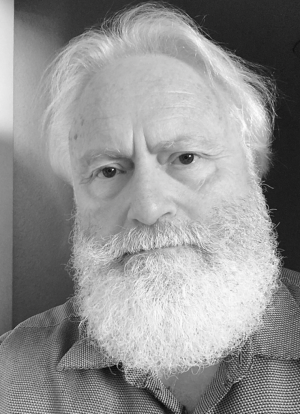 By Chris Ernest Nelson
By Chris Ernest Nelson
April 7, 2023 (San Diego) -- It may not be your grandparent’s HIV. It may no longer be a death sentence, but it still poses a potent threat to public health. The good news is, there has been significant progress in the past 40 years in the treatment and management of this one-time deadly virus. When HIV/AIDS first appeared in our communities, it was most often a death sentence to those infected. But today people with HIV have effective medications that offer them satisfying and productive lives.
The number of new cases of HIV infection have fallen to half in the past decade. Those who are infected have learned how not to spread the virus, and they have access to life-saving medications. When people know the dangers, preventative measures, and availability of treatment, they can be better prepared to avoid infection, or to deal with a HIV diagnosis, and how to guide themselves or loved ones toward getting the treatment they need.
Today, 90 percent of HIV infections are among young men. There are roughly 15,000 local residents living with HIV, and another estimated 1400 people living with an undiagnosed infection. That is why testing is so important in reducing the spread of the virus. HIV testing is easy, it is available without cost, and your identity will remain confidential.
With or without a diagnosis, prevention can be as simple as using a condom. In addition, the use of “PrEP” (pre-exposure prophylaxis), a daily pill, is even more effective at lowering the risk of getting and spreading HIV from sex, and also from intravenous drug use. PrEP is readily available from a professional healthcare provider.
It is important that treatment begin as soon as someone receives a positive diagnosis. Early treatment can reduce the virus’ impact on their body and can encourage them to modify their behavior so as reduce the danger to others. For those living with HIV, there are therapies available that help them to live long and healthy lives. “Antiretroviral therapy” (ART), a combination of medicines that slows down the effects of HIV on the body, can help someone remain healthy for years, and even reduce the chances of transmitting the virus to others.
There are two pharmaceutical methods for the treatment of HIV: pills and injections. Pills are recommended for people who are just beginning treatment. There are a number of FDA-approved pills and combinations of medicines available. For those who have an “undetectable viral load” (for at least three months), there is an option of a clinically administered therapeutic injection on a monthly or every-other-month basis. At this time, HIV infection cannot be cured, but these therapies can substantially reduce the negative impact of the virus on one’s quality of life.
For those of us who may be sexually active, it is important to consider the impact of online dating apps, where strangers will often arrange to meet for sex. These apps can lead to multiple casual one-time encounters that substantially increase one’s exposure to the HIV virus. Understanding the risk and taking appropriate precautions is a personal responsibility, but parents, schools, and friends can encourage people to do what they can to reduce the danger of infection.
HIV remains a significant health risk, especially to our young adult community. Dealing with that risk requires knowledge, personal responsibility, and access to timely affordable health care. Even though the effects of HIV can be controlled in the body, and those with the infection can now live virtually normal lives, we should commit ourselves to improving our awareness of the risks and our willingness to reduce its spread in our community.
FOR ADDITIONAL INFORMATION SEE THE LINKS BELOW:
https://www.hivcare.org/hiv-
https://www.cdc.gov/hiv/
----------------------
Chris Ernest Nelson is a poet, painter, and historian. He is a graduate of San Diego State University, and taught history and art for 27 years at Mount Miguel High School, in Spring Valley, CA. He has lived in San Diego since 1959 and presently resides in Golden Hill. Nelson’s original history of the 1939 election contest over food-stamps for the elderly, “The Battle for Ham and Eggs,” appears in the Journal of San Diego History, Fall 1992. Nelson was named Author of the Month, Nov. 2018, by the San Diego Public Library for his book "HARVEST the poetry of Chris Ernest Nelson."











Recent comments